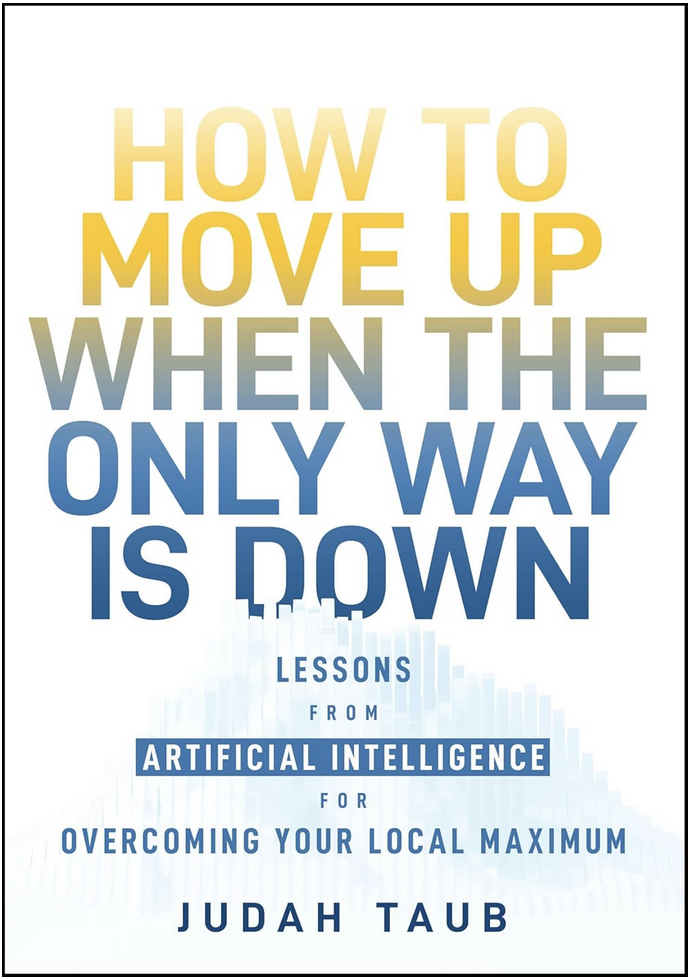As a human, you’re likely to view a major event as confirmation of your belief more than one that challenges it. For example, a shooting in America leads both sides of the political spectrum to see their arguments confirmed by the event.
In his book, The Righteous Mind: Why Good People Are Divided by Politics and Religion, Jonathan Haidt argues that our moral judgments aren’t based on rationalization or reflection, but on intuition. Logical arguments and rational thoughts, Haidt says, are often used to justify our initial reactions. It’s so ingrained that we interpret and even remember events we saw with our own eyes differently than they are to adapt our views.
Why Founders Are Extra Susceptible to Confirmation Bias
The tendency is to create echo chambers by surrounding ourselves with people and information that support our preconceptions, and this directly tilts us towards Local Maximums. This tendency leads to the exact opposite of A/B/X testing. Rather than considering alternative and potentially far better paths, our brains close off access to those paths entirely.
Extreme cases of confirmation bias eliminate even A/B testing in favor of simply A (non) testing: there is only one path, and only information that reinforces it slips through our filters. This scenario is more problematic than simply being at a sub-optimal point, as our mind paints the world differently.
Founders are particularly prone to finding themselves in a Local Maximum because of confirmation bias. These individuals tend to be naturally optimistic (who else voluntarily embarks on a blood-sweat-tears fueled journey of startups?) and work around the clock to make their vision a reality. Most days are an uphill challenge.
Often, we imagine the mountain we face is much more attractive than it is. Startup founders pitch their ideas, and sometimes hear what they would like to hear to paint a picture that the potential of their venture is far better than it is in practice.
At our venture firm, asking entrepreneurs to summarize their key takeaways from conversations with industry experts has proven to be a revealing technique. It helps us predict which founders are likely to navigate their companies to more optimal elevations and which will keep digging in.
When we compare the advice given with a read-out of the conversation reported by the founder, we often discover that what he or she heard is different from what was said. For example, the expert might have said, “I have seen many startups in this space. While you are doing something different, it is still going to be hard.”
Yet, the founder heard, “It’s a hard space, and he has seen many startups doing what we’re doing, but he thinks we are different.” The founder hears what he wants to hear.
How to Elicit Better Responses — From People and Machines
Learning to listen accurately is not the only way to avoid the echo chambers that lead to a Local Maximum. Learning to ask questions correctly is equally as important.
In his book, The Mom Test, Rob Fitzpatrick highlights the value of asking questions that lead to insightful answers, rather than asking questions that provoke flattering. He argues it is possible to craft questions in a manner that even your mother will provide useful insights to versus than simple flattery.
Asking open questions instead of closed ones will lead to greater insight.
Asking insightful, open questions is something computers strive to do better, too. Although machine learning algorithms continuously improve as we feed them more data, the rate at which they improve depends on the variance of the data set. Essentially, algorithms have learned that echo chambers make them less accurate and can be misleading.
For example, if you want to teach an algorithm to read an ultrasound, feeding it similar scans — say, from a certain angle, resolution or of certain types of people — will only get you so far. Gradually, the machine’s capabilities will plateau unless it is fed data of a different nature.
What Is Random Forest Technique?
In data science, methodologies are continually developing and improving to address such biases. There are software systems that will tell you what type of data your algorithms are missing to make them more robust.
Random Forest Technique Definition
Another machine learning technique is called “Random Forest,” invented by Leo Breiman and Adele Cutler in the early 2000s. Leo Breiman, a prominent statistician and professor at UC Berkeley, introduced the Random Forest algorithm to try to address overfitting, an overly narrow approach to problem solving. Unlike typical decision-making trees, instead of taking one path that might get stuck, Random Forest incorporates multiple viewpoints (decision-making trees) to reach a better conclusion.
Let’s say your information gathering about Jonathan, a guest at a charity you’re involved in. You want to determine how wealthy he is and can question an acquaintance who knows him well. A typical decision tree with four layers might work like this:
- You: Does he have a job?
- Acquaintance: No.
- You: Did he have a job in the last five years?
(You would ask a different question if he said yes.)
- Acquaintance: No.
- You: Are you looking for a job?
- Acquaintance: No.
- You: Did you ever have a job?
- Acquaintance: Yes.
Now, close your eyes and guess how much money Jonathan has in his bank account.
Did you assume the guy’s barely making it? What if he happens to be a multi-millionaire? Where did you go wrong?
Your decision tree was a good one, but it relied on the fact that Jonathan’s wealth depended on a job. A different sequence of questions could have focused on inheritance.
- Are both of your parents living?
- Did you inherit money from a family member?
- Was the family member someone with multiple assets worth millions of dollars?
- How many people received part of this wealth?
Alternatively, you could have built a decision tree around the assumption that Jonathan gained wealth through stocks or the sale of an asset.
- Did you ever run a business?
- How many people worked for you?
- What was the company’s turnover?
- Did you sell the business?
Choose the Right Decision Tree
More questions can prompt additional insights. Random Forest is unique as it uses a set of algorithms that run many scenarios, such as all four of the above examples in parallel. At the end, it normalizes the responses across categories.
For example, I could have gotten a low wealth suggestion on three of the four decision trees, but one of them strongly indicated that Jonathan sold his company for huge sums of money. He enjoys a simple life of volunteering versus taking extravagant vacations multiple times a year, and the other decision trees didn’t catch this.

Data scientists use the terminology of “choosing the wrong tree.” In my book, the terminology is “climbing the wrong mountain.”
Asking the correct questions and/or employing a Random Forest technique are far more than algorithmic safeguards; they can lead us away from the dangerous echo chambers that lead to Local Maximums. A variance of data, as explored through the ultrasound example, and the consideration of multiple viewpoints, as explored through Random Forest, reflects a broad and wide encompassing perspective we should cultivate in both our own minds and in our organizations.
This perspective doesn’t close us off from the paths that might potentially disrupt our assumptions. Rather, it actively seeks those paths out, so we refine and improve our assumptions.
Adapted with permission by the publisher, Wiley, from How to Move Up When the Only Way is Down: Lessons from Artificial Intelligence for Overcoming Your Local Maximum by Judah Taub. Copyright © 2025 by Judah Taub. All rights reserved. This book is available wherever books and eBooks are sold.





